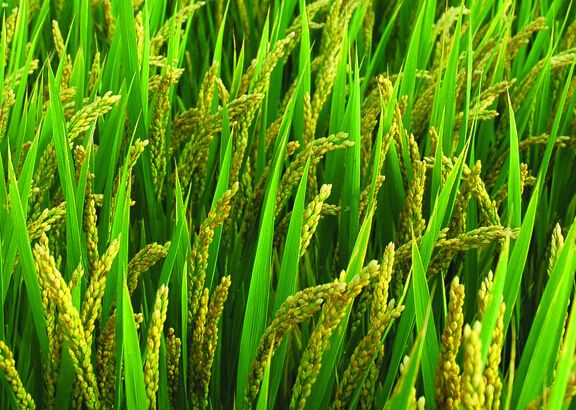It is an annual cultivated plant. Erect culms are fasciculate and about 1 meter in height. Sheaths are glabrous and the lower ones are longer than those in between; ligule is membranous, hard, lanceolate, 5 to 25mm in length, and with apparent auricle when young; flat blade is from lanceolate to linear-lanceolate, 30 to 60cm long, and 6 to 15cm wide. Loose panicles bend down when ripe and branches are often rough and with angular edges; spikelets are oblong, flattened on both sides, 6 to 8mm long, and with 3 flowers. The two flowers beneath degenerate into minimal lemma and locate below a bisexual flower; glume extremely degenerates and leaves only half-moon trace at the top of the petiolate spikelet; vestigial lemma is 3 to 4mm long; squamations are 2, oval, and about 1mm long; stamens are 6; anther is 2mm long; styles are 2, tubular, short, and broom-like stigma. Caryopsis is smooth. Flower and fruit time is from June to October.
ROOT OF GLUTINOUS RICE BENEFITS
As everyone knows, it is good for health. More importantly, there are many sticky rice easy recipes available, such as glutinous rice lotus root, glutinous rice balls with peanut filling, etc. But in terms of the medicinal uses, it is the roots that play an important role. It is so commonly used that many elderly people lived in countryside know it well that the rice roots, especially sticky rice root, can cure night sweats. The knowledge is handed down to them from their ancestors, who have been learning from the nature for thousands of years. That's why they are able to heal by just picking the plants and flowers at random. Sticky rice root is no exception.

Glutinous Rice Root
Night sweat is a sign of disease characterized by abnormal sweating right after falling asleep and no sweating right after waking up. The most common causes of night sweats include thyroid problems, breast cancer, infections, menopause, medications, rheumatoid arthritis, Obstructive Sleep Apnea Syndrome (OSA), hormonal disorders, and more. From the perspective of traditional Chinese medicine, what causes night sweats are heart blood deficiency and fire excess from Yin deficiency. The logic here is quite easy to understand: Yin deficiency – excess Yang – excess heat – night sweating. And TCM believes that roots possess the nature of lurk, which is so intuitive since they grow underground. Medicinally it corresponds to the kidney in humans.
RECIPES FOR STICKY RICE ROOT ON HERBAL REMEDIES
The Chinese Materia Medica concludes that it is sweet in nature and neutral in nature and it goes to liver meridian. Principal functions include nourishing yin to get rid of heat and stopping sweating. Main indications are fever due to yin deficiency, spontaneous sweating, night sweating, thirst, dry throat, hepatitis, and filariasis. Suggested dosage is from 15 to 30 grams or from 60 to 120 grams in large doses, in decoction. And the fresh roots are preferred.
1. Chyluria can be treated with decoction of 120g sticky rice root, twice a day, and 20 days as a treatment course.
2. It matches with Yi Yi Ren (Coix Seed), Bai Dou Kou (Round Cardamon Fruit), Chen Pi (Citrus Peel), and Gu Ya (Sprouted Rice) to treat dyspepsia and reduced appetite. And it joins hand with Huang Qin (Baical Skullcap) and Bai Zhu (White Atractylodes) for miscarriage prevention.
3. For spontaneous perspiration caused by Chi deficiency, it can be used alone or combined with Huang Qi (Astragalus Root), Dang Shen (Codonopsis), White Atractylodes, Fu Xiao Mai (Triticum Aestivum), etc.

![Diseases, Symptoms, tcm, [tcmwindow.com]](/uploadFile/adImg/2015/11/11/f5cbfcc0-4df5-4646-9b9a-f316651a0199.jpg)





